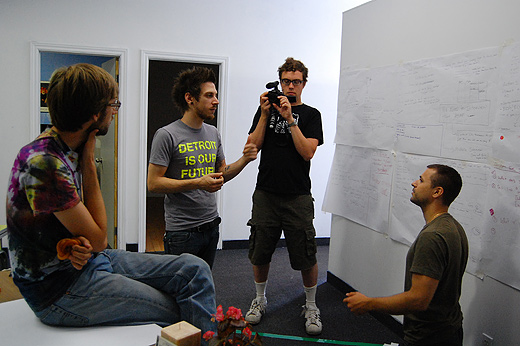
The weekend brought all of the artists together to collaborate on each other’s projects. The Imagination Lab engaged lots of young creative minds, and Thom Provost began work on his installation.

The weekend brought all of the artists together to collaborate on each other’s projects. The Imagination Lab engaged lots of young creative minds, and Thom Provost began work on his installation.
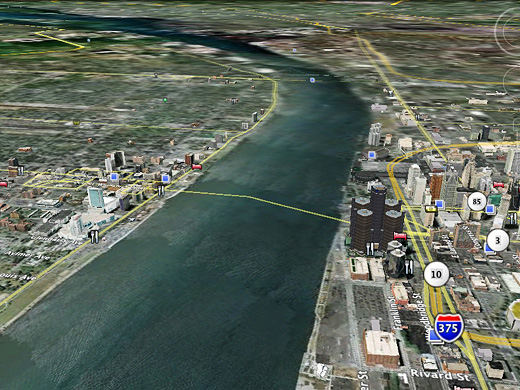
As previously noted on Windsor Visuals and Tom Lucier’s Twitter (via Planetizen), a number of buildings in Windsor and Detroit are now on Google Earth in all of their SketchUp-rendered glory.
It’s quite interesting to fly around and see what buildings have been modeled, not all of which have been done by the SketchUp team, but by local folks with the talent and skill to do it.
I think this is going to help us with a number of projects, since we love to do Photoshop renderings to imagine projects … having the ability to see those renderings on 3D objects can only make things that much easier. I just wish one of us knew how to use SketchUp.
Continue reading “3D Renderings of Buildings from Windsor + Detroit on Google Earth”
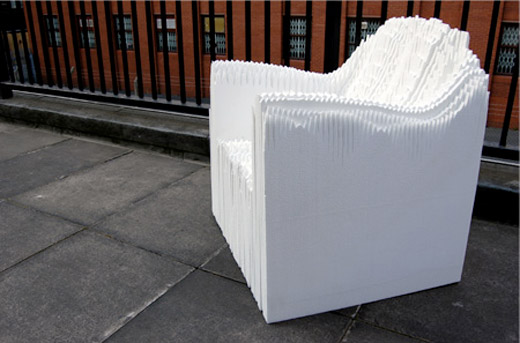
Sound/Chair by Matthew Plummer Fernandez was the result of testing 719 sounds to see which one produced the best physical object. Using 3D visualization software he wrote, Plummer Fernandez graphs the sound on a volume/time/frequency plot, thereby realizing “the beautiful and unexplored aesthetic of sound […] a landscape of spikes and shapes that vary accordingly to the type of sound.”
Plummer Fernandez is a Royal College of Art (soon to be graduate?) and designer based in London, though I find many of his “self-initiated” projects most interesting—The Sound of Light (“A casing is made for a flourescent tube light by recording and graphing 1 second of the ‘hum’ sound produced by the light”) and Sound Tagging (“Most large buildings have distinct auditory signatures as a result of vibrations generated by traffic, underground, and wind that resonate through the solid structures”)—remind me of what I love about sound.
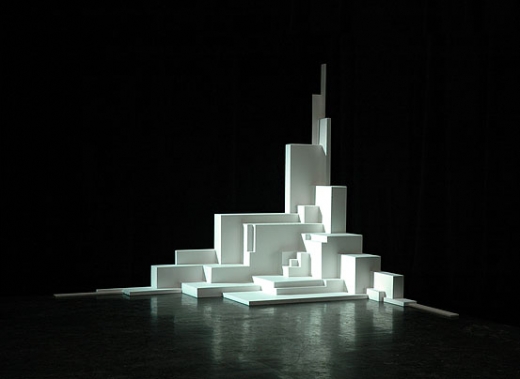
Augmented Sculpture Series by Pablo Valbuena “focuse[s] on the temporary quality of space, investigating space-time not only as a three dimensional environment, but as space in transformation.” I remember coming across this last year, but was reminded of it by a post on vvork. It’s very refreshing to see projection occurring on a 3D object, thereby animating something very rigid and physical. Watch the video to get the full effect.
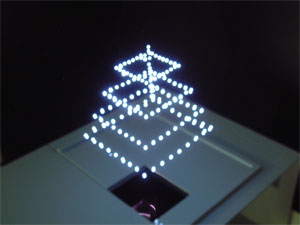
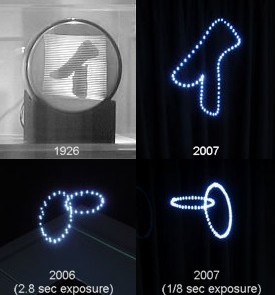
In 2006, AIST (Japan’s National Institute of Advanced Industrial Science and Technology) developed the first 3D image projector. “How does it work?” you say? From Pink Tentacle:
The newly developed device … creates “real” 3D images by using laser light, which is focused through a lens at points in space above the device, to create plasma emissions from the nitrogen and oxygen in the air at the point of focus. Because plasma emissions continue for a short time, the device is able to create 3D images by moving the point of focus.
Essentially, the laser IGNITES AIR to create a pixel. So, I wouldn’t suggest touching it. lawlz.
Here‘s one more article about the update of the projector.